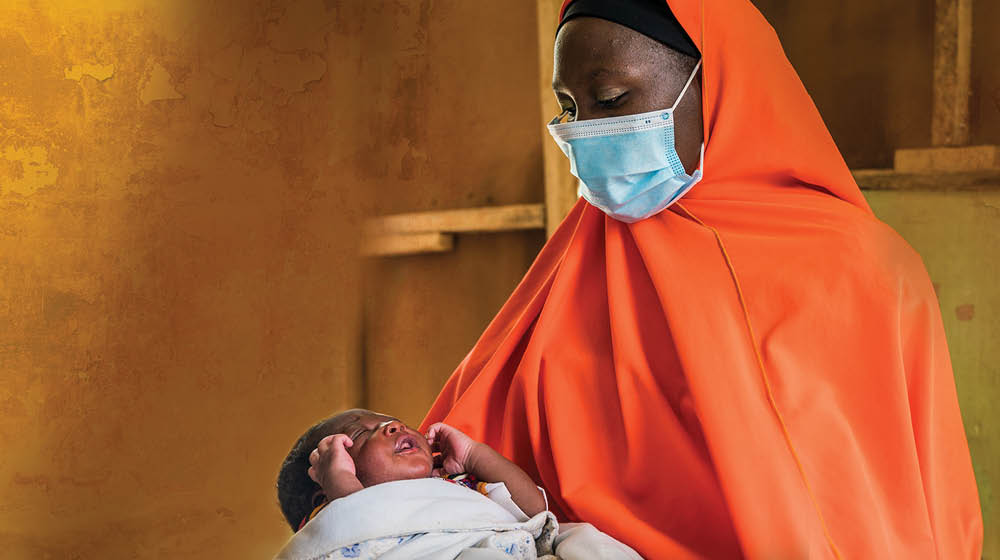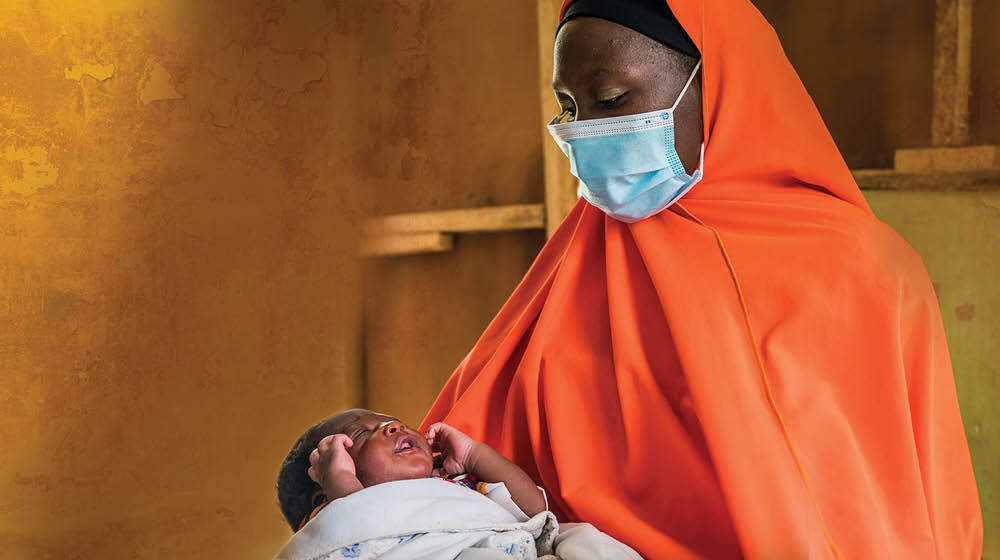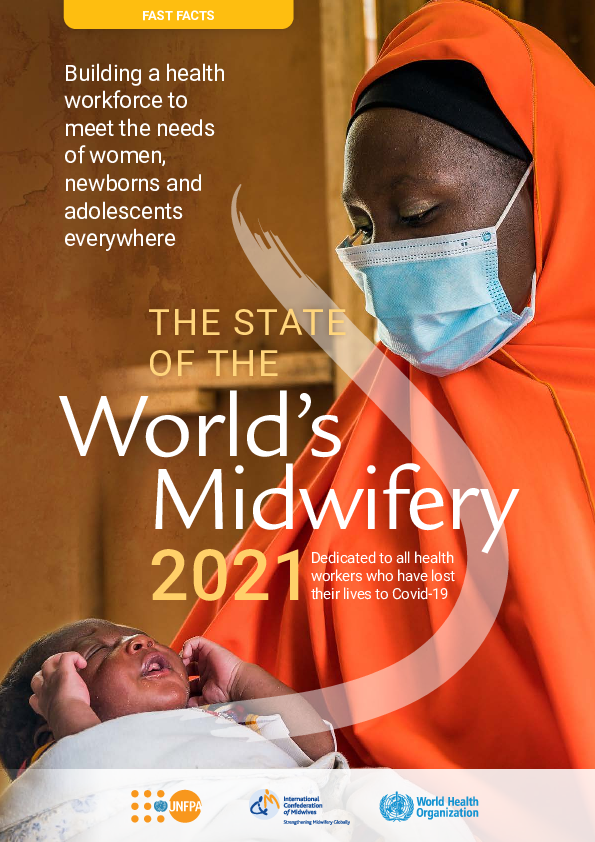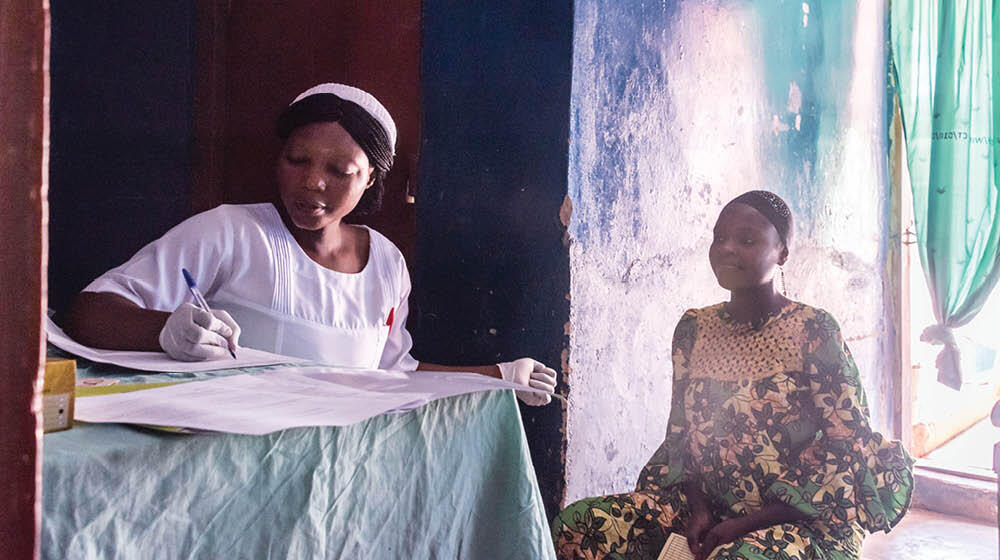The State of the World’s Midwifery 2021
The State of the World’s Midwifery (SoWMy) 2021 presents findings on the Sexual, Reproductive, Maternal, Newborn and Adolescent Health (SRMNAH) workforce from 194 countries. The report, produced by UNFPA, the International Confederation of Midwives (ICM), the World Health Organization (WHO) and Novametrics, shows the progress and trends since the inaugural 2011 edition and identifies the barriers and challenges to future advancement. The report establishes a global shortage of 1.1 million SRMNAH workers, the largest shortage (900,000) being midwives.
Investment is urgently needed in education and training; management, regulation and work environment; leadership and governance, and service delivery. Analysis indicates that fully educated, licensed and integrated midwives supported by interdisciplinary teams can deliver about 90 per cent of the essential SRMNAH interventions across the life course, yet they account for less than 10 per cent of the global SRMNAH workforce. For midwives to achieve their full potential, bold investments by governments, policymakers, regulatory authorities, educational institutions, professional associations, international organisations, global partnerships, donor agencies, civil society organisations and researchers are needed at country, regional and global levels.
Many countries, including high-income countries, are forecast to lack sufficient SRMNAH workers to meet demand by 2030. Covid-19 has reduced health workforce availability, and access to SRMNAH services in a safe environment needs to be prioritised despite the pandemic. “Left behind” groups require special attention to ensure their access to care from qualified practitioners.
The State of the World’s Midwifery was developed in three parts: a technical report, country profiles for each of the 194 countries and related annexes including supplements and webappendices.
The report focuses on the crucial need to improve the availability, accessibility, acceptability and quality of midwifery services. Despite a steady drop in maternal and newborn deaths since 1990, hundreds of thousands of women and newborns continue to die each year during pregnancy and childbirth. An estimated 289,000 women and about 3 million newborn babies died in 2013 alone – the vast majority due to complications and illnesses that could have been prevented with proper antenatal care and the presence of a skilled midwife during delivery.











